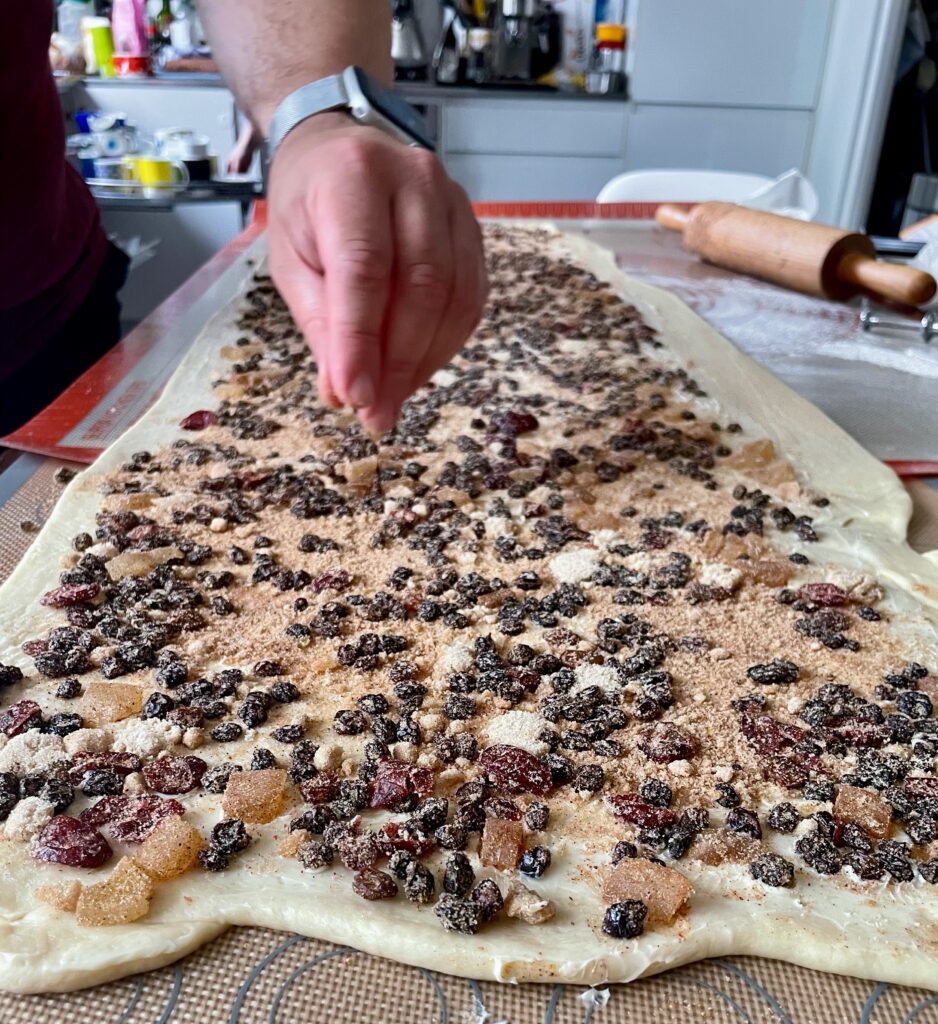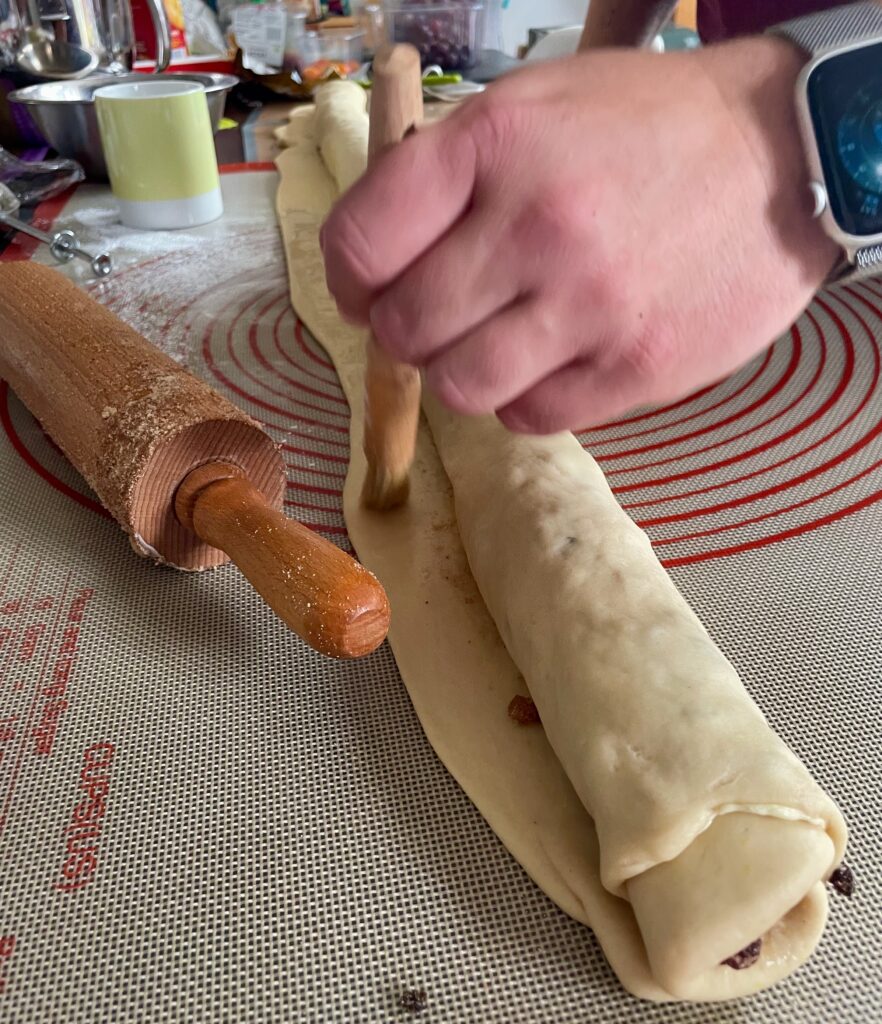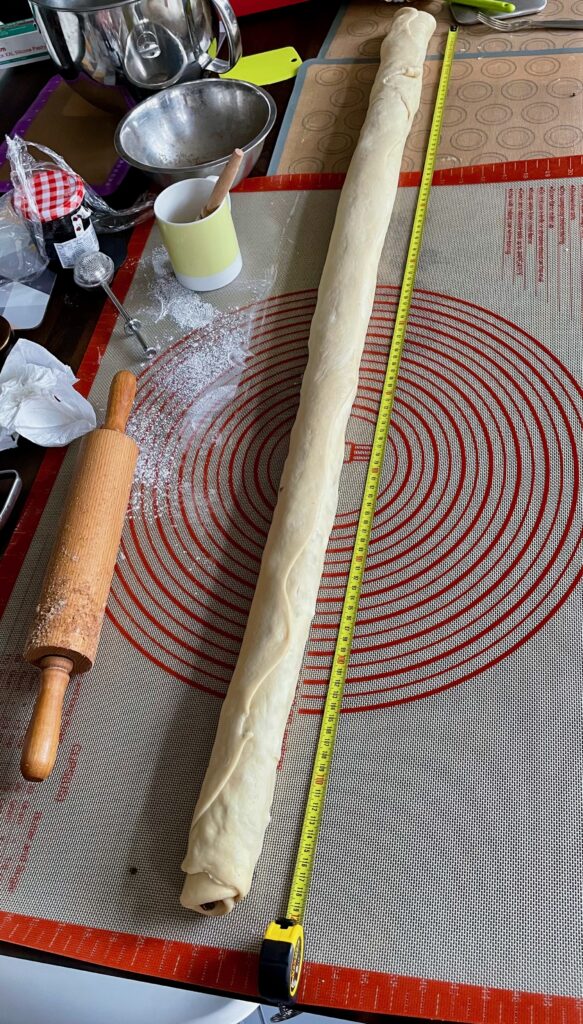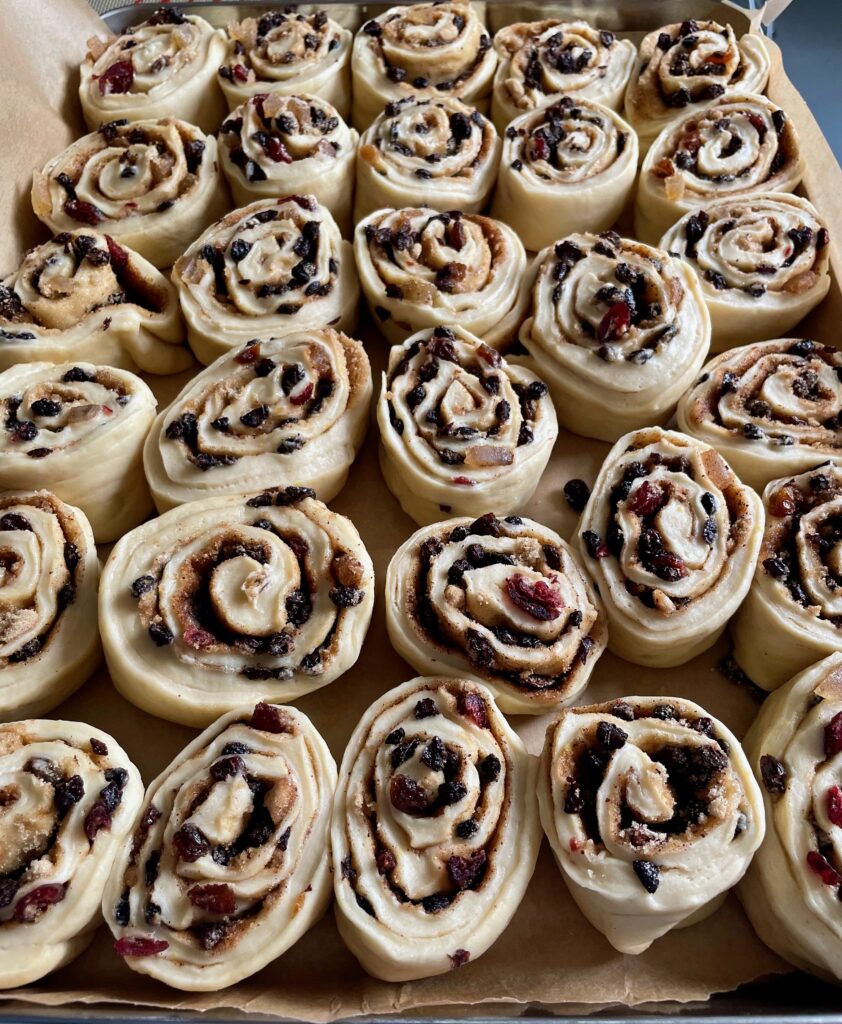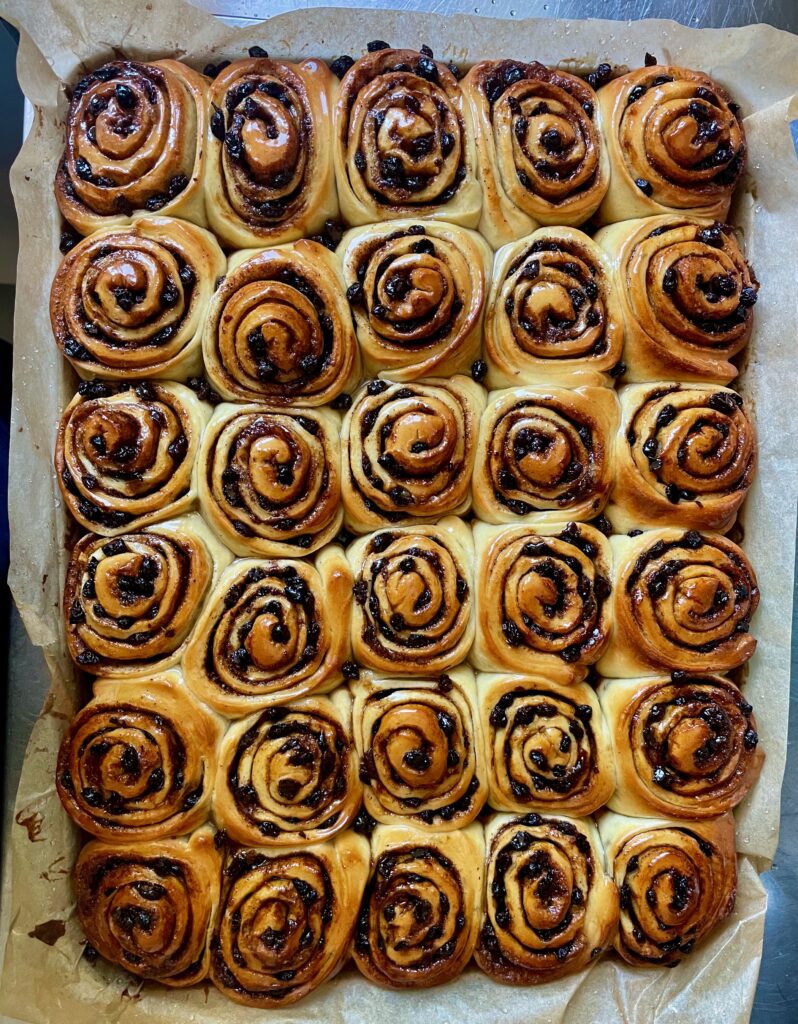Sticky buns for a crowd
Want to bring something to a party that is a bit different? Need to give everyone in your children’s class a treat for their birthday? Fancy something different for a cake sale? Then try these tear-and-share party buns – sticky, fruity but not overly sweet these buns always go down really well.
A huge tray of Chelsea buns there are enough for 30 buns to give everyone in a crowd a treat.
The challenge with this recipe is its scale, but it is very satisfying to produce a treat for so many people. See tips for some helpful hints on coping with the size!
Takes 4 hours with about 1-hour hands on time. In common with yeast recipes, I’ve given the liquid measures as weights.
For party buns you will need…
Dough:
- 1kg strong white bread flour
- 100g unsalted butter
- 400g whole milk
- 14g instant yeast
- 100g golden caster sugar
- 2 large eggs
- 20g salt
- Zest of two lemons
Filling:
- 200g soft brown sugar
- 200g currents
- 100g raisins
- 50g dried cranberries
- 50g mixed peel
- 20g mixed spice
- 100g very soft unsalted butter
Glaze:
- 100g granulated (or caster) sugar
- 75ml water
You will need a 30x40cm (12x16inch) tray with raised edges and lined with parchment paper.
To make party buns…
- Melt the butter in a pan and add the milk to just warm through.
- Make the dough (machine) – put the milk mixture, eggs and sugar into the mixer bowl and give it a good stir with a spoon or spatula to combine. Add the flour, salt, yeast and lemon zest, and use a dough hook on the machine mixer to combine. This dough is quite stiff but if it appears too stiff add a little more milk. Once combined set the machine to kneed for 10 minutes. Cover with film and leave to prove for 2 hours.
- Make the dough (by hand) – add the eggs and sugar to the milk mixture and stir to combine. Put the flour, yeast, salt and lemon zest in a large bowl and stir to evenly distribute. Make a well in the centre and add the milk mixture. Combine the ingredients using a large spoon and then use your hands to form a dough adding a splash more milk if it is too stiff. Empty the mixture on to a clean surface and knead for 10 minutes till elastic. Return the dough to a cleaned bowl cover with film and leave to prove for 2 hours.
- Make the filling by mixing all the filling ingredients except the butter and set aside till later.
- Once the dough has doubled in size tip it out onto a large lightly floured work surface and roll roughly by hand into a long sausage. Using a rolling pin roll the dough into a rectangle about 35cm by 1.2m long (14 by 47 inches).
- Spread the butter evenly over the dough leaving a 1cm gap at the top along one of the long edges. Sprinkle the filling mixture over the dough as evenly as possible and roll the rolling pin over the top a couple of times to press the filling into the surface slightly.
- Starting at the bottom roll the dough as tightly as you can into a roll about 1.2m (47inches) long. Using a pastry brush, or a finger, wet the unfilled dough at the top and seal the top of the dough. Press the dough firmly to even out any larger sections.
- Cut the log into 30 x 4cm (just over 1½ inch) pieces with a sharp knife. Place the buns into the lined 30x40cm tray in a 5×6 grid. Mix the buns up so you don’t have buns of a similar size next to each other. Cover the tray with film and leave to prove at room temperature for 45 minutes.
- Preheat oven to 160C fan / 180C non-fan. Once buns have doubled in size remove film and bake for 25 minutes.
- Whilst buns are baking make the glaze by combining sugar and water in a small pan and heating until a light syrup is formed. Once the buns are golden and cooked though remove from the oven and whilst still hot and in the tin brush generously with the glaze.
- Let them cool in the tin, then tear and share with lots of friends!
Tips
- If you use a mixer to knead the dough do check its capacity (usually detailed in the instructions or on the manufactures website) as exceeding this can damage the mixers motor. In the recipe above the dough is 1.75kg at 50% hydration.
- These buns don’t need any special equipment to make but they do need a large workspace to roll out, I use my dining table which I cover with silicone baking mats.
- I use a two metre tape measure to help make sure the dough is the right size – it cost me about £2 and I keep it separate from my DIY tape for all sorts of cooking projects and it’s helpful for measuring tins!
- The dough will be quite thin and stretchy and if it feels like it is becoming too tight stop rolling and lift the dough to release the tension. Wait a couple of minutes for the dough to relax a little and start rolling again.
- I find a silicone spatula is the best tool for spreading the butter.
- If you don’t quite make 30, or have enough for 31 then shuffle them around a bit to fit in the tin!
